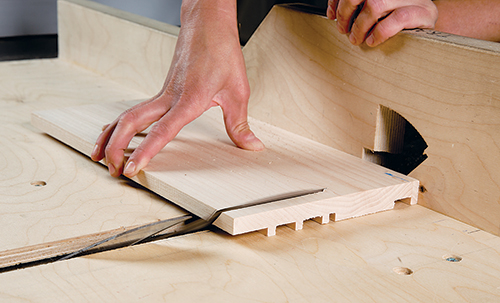
I have a DeWalt sliding, compound miter saw. The degree settings on the saw are fine, but after a cut is made, the top of the piece of wood flares out. I used a combination square to check the squareness of the cut in a perpendicular line to the cut, and while the bottom of the cut is fine, the top has flared and is less than 90 degrees. What can I do?
Lee Grindinger: It sounds to me like the piece is creeping as you cut it. As you cut a piece, it can be pulled slightly by the blade. The steeper the miter the more likely this is to occur. When you cut straight down, the face is cut first and the pull of the blade moves the piece slightly so it cuts deeper as the rest of the cut is completed. Cutting slower, thus reducing the pressure from the blade, is a solution. Holding on more tightly to the piece as you cut it and using a hold-down if you need to is another solution. Making a rough cut first, then using a final cut to remove only a 64th or so would probably solve your problem. Another possible cause is that the blade itself is dull, but reducing the load either by cutting slower or cutting less material should work.
Rob Johnstone: Miter cuts are simple in concept but tricky in practice. First, make sure your blade is sharp. If it is dull, it will flare to the side of the blade that is sharpest. Second, use a blade that has sufficiently sized gullets to remove the sawdust you are creating. (You can also try slowing down the speed of your cut to allow for dust removal.) I recently learned that the volume of dust created by a saw cut is three times the volume of the wood that is being cut up ? thus explaining the possibility of overloading a saw’s capability to eject the dust. I am assuming that you have secured the stock before you began your cut.





